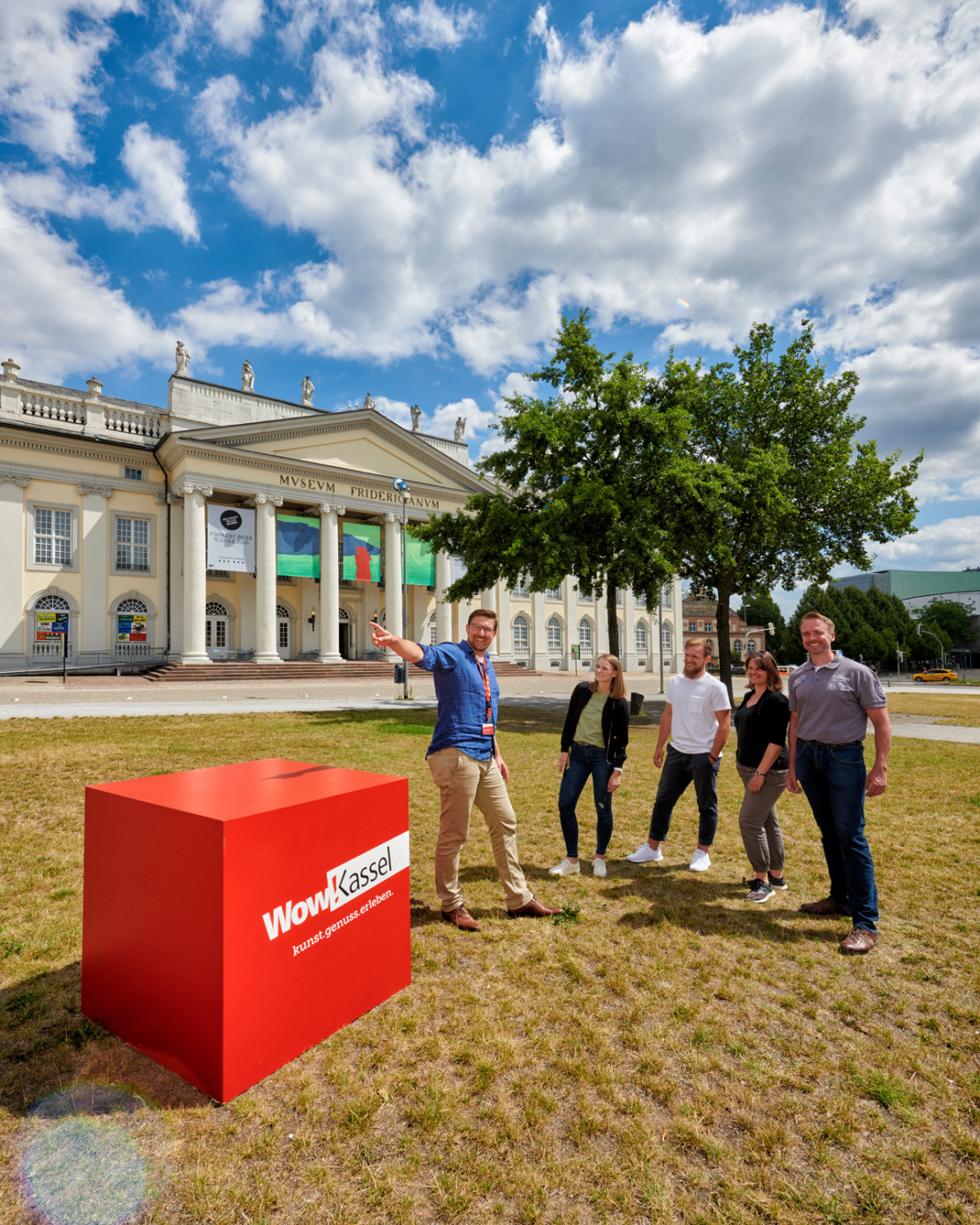Artist with hat. Art with courage.
Joseph Beuys at documenta
Joseph Beuys was not one of those artists who lets their work speak for itself. On the contrary – Beuys was there! He wanted to speak to the people himself, explain his concept of art to them, engage in discussion with them, and stimulate social change.
Here in Kassel, documenta visitors were able to experience this for themselves first-hand on multiple occasions: at documenta 5 (1972), the artist with the unmistakable hat was available in his “Office for Direct Democracy Through Referendum” for 100 days. There he spoke with the residents of Kassel and with people from all over the world. One humorous highlight of the exhibition was a “Boxing Match for Direct Democracy,” for which Beuys climbed into the ring with an art student.
Five years later, in the Fridericianum, he then set up a discussion forum of the “Free International University,” which he also founded. Beuys could also be approached here on a daily basis. At the same time, he presented his “Honey Pump at the Workplace” installation, which pumped fresh honey through several rooms of the museum – a symbol for collective creative power, which also plays a key role in the concept of documenta fifteen.
For Beuys, all these activities, like many of his other works, were the expression of an expanded definition of art, with his idea of “social sculpture” forming its core. Beuys was convinced that every person is an artist and can change society through creative action. He wanted to initiate and help shape this process through his own creative work. Probably the most spectacular example of social sculpture was Beuys’ “7000 Oaks” project, which still shapes the urban landscape of Kassel today.




